
Which one would we choose?
Our choice: Oral-B Pro 3 3000 / Amazon, Oral-B / ~£44.99
2nd choice: Oral-B iO Series 3 (iO3) / Amazon, Oral-B / ~£64.99
I would happily use the Pro 3 or the iO3 daily. They both clean the teeth well and have the features I look for in an electric toothbrush.
The design of the iO3 is more appealing in my opinion, as is the quieter motor and enhanced pressure sensor.
Yet, the Oral-B Pro 3 is my top pick because it works out significantly better value for money over several years of ownership.
Oral-B Pro vs iO: a series of different brushes
I am often asked what’s the difference between the Oral-B iO and Pro Series electric toothbrushes.
iO and Pro are essentially names for a family of different brushes. Under each family sit many different models with varying features.
Therefore, whilst there are some generalised differences between each series, the differences do vary depending on which brush within each range you are looking at.
The main, differences between the Pro and iO models are:
- They use different brush heads
- An iO brush head is not compatible with the Pro and vice versa.
- iO brush heads typically cost 2 times that of those for the Pro.
- The iO range of brush heads is smaller, but similar to those for the Pro.
- The Pro series round brush heads are the same as those you might have seen or used over the 15+ years that Oral-B has been using such a design.
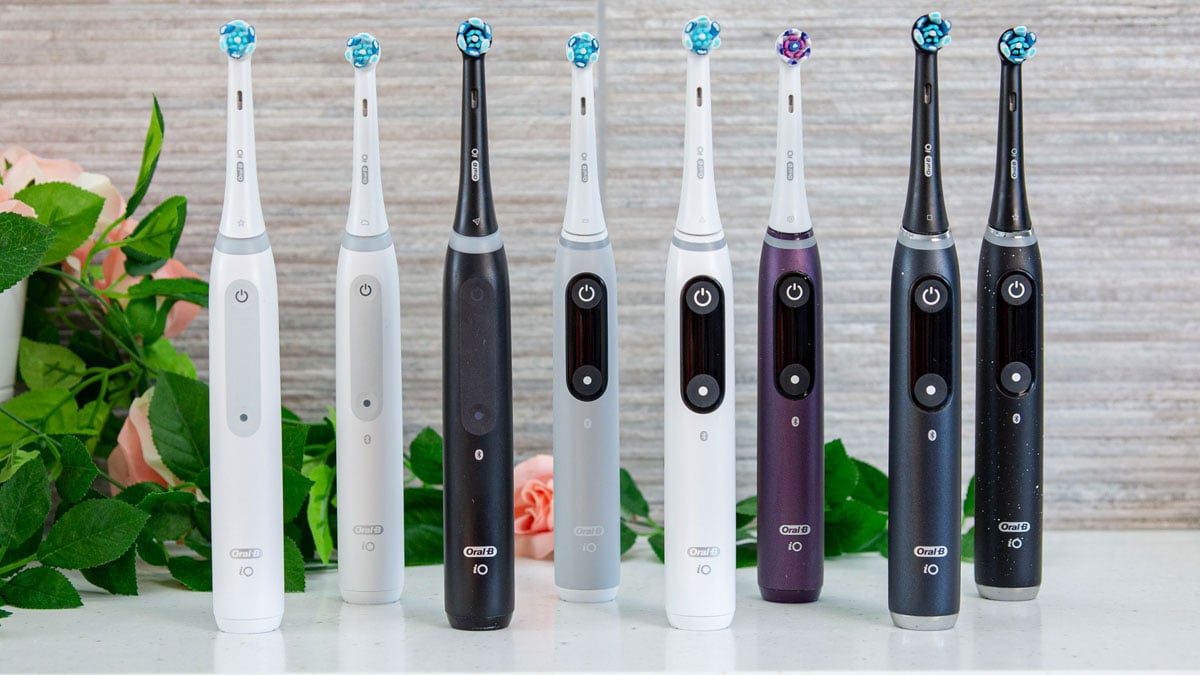
- iO models have an advanced pressure sensor
- The iO’s sensor alerts me when I apply too much pressure, via a red light, like the Pro models do.
- In addition, it lights up green when the correct brushing force is applied and white when insufficient pressure is applied. Pro models don’t do this.
- The iO models use a different motor technology
- They have a magnetically driven motor that offers oscillations, rotations and micro vibrations compared to the oscillations, rotations and pulsations of the Pro Series.
- They are different, but still relatively similar in the way they work. The difference does result in a slightly softer brushing experience with the iO models, it feels less harsh on the teeth and gums.
- iO brushes are quieter
- iO models are typically around 10 decibels quieter than Pro models with a less mechanical sound.
- The iO has a more modern design
- iO models have a matt finish to the plastic rather than the gloss of Pro models.
- Selected models have displays built into the handle, never before included on Pro models.
It is the Pro 3 and iO3 that are among the most popular from the respective ranges as they are good value, strong performing models from each range. As such I have shared more detail on the differences and what that means in the remainder of this article.
Key differences: Pro 3 vs iO3
| Find out more |
| Electric Teeth Rating |
| Retail price |
| Approximate 3 year cost |
| Cleaning Action |
| Number of cleaning modes |
| Brushing intensities |
| Timer |
| Pacer |
| Pressure Sensor |
| Battery life |
| Battery type |
| Number of heads included |
| Travel case included |
| Bluetooth connectivity |
| Position tracking |
| Noise |
| Warranty |
| Buying options |
|
Our Choice

|

|
|---|---|
| Review | Review |
|
(4.7)
|
(4.8)
|
| £90 | £160 |
| £78 | £168 |
| Oscillating-rotating & pulsating (3D) | Oscillating-rotating & micro-vibrations |
| 3 | 3 |
| - | - |
|
|
|
| 30 second quadpacer | 30 second quadpacer |
|
|
|
| 14+ (plus) days | 14 days |
| Rechargeable Lithium-Ion (Li-Ion) | Rechargeable Lithium-Ion (Li-Ion) |
| 1 | 1 |
| - | - |
| - | - |
| - | - |
| 73dB | 64dB |
| 2 years | 2 years |
- Cleaning/brushing action
- The iO3 uses a different type of brush motor than the Pro 3. It creates oscillations, rotations and micro vibrations compared to the oscillations, rotations and pulsations of the Pro.
- Handle design/colours
- The Pro 3 is available in 4 colours (white, black, pink & blue) compared to the 3 (black, blue & pink) of the iO3.
- The Pro 3 has a gloss finish to the plastic compared to the matt finish of the iO3.
- The Pro 3 has a dimpled texture to the rear of the handle the iO3 does not have.
- The Pro 3 is slightly lighter at 119g vs the 127g of the iO3.
- Brush heads
- The iO3 uses a different style of brush head exclusive to the iO Series.
- The iO3 comes with 1 x Ultimate Clean head, whereas the Pro 3 comes with 1 x CrossAction.
- Pressure sensor
- The iO3 has an advanced pressure sensor that shows insufficient, correct and incorrect pressure compared to the incorrect only of the Pro 3.
- Other features & technologies
- The iO3 will remind you when to replace your brush head.
- Other
- The iO3 is quieter at around 64dB compared to the 73dB of the Pro 3.
- Price
- The iO3 is more expensive with a retail price of £160 compared to the £90 of the Pro 3.
Please note. Every effort is made to ensure the key differences listed are correct, but these differences are subject to change without notice. Products and the box contents can be changed without notice and different variants can exist.
Oral-B Pro 3 3000 vs iO Series 3: a detailed comparison
The iO3 and Pro 3 don't look massively different but there are a few obvious aesthetic differences.
Most noticeable to me is the use of matt plastics compared to the gloss on the Pro 3. It subsequently makes the iO3 look, in my opinion at least, classier and more premium. Arguably more fitting of the price tag.
The Pro 3 Series of brushes are marginally thinner and lighter in the hand. It is too marginally more slippy when wet. At least, that is how it feels to me, which is surprising given the Pro 3 has a dimpled texture to the rear of the handle, that the iO3 does not have. Neither are the best options for those with dexterity issues.
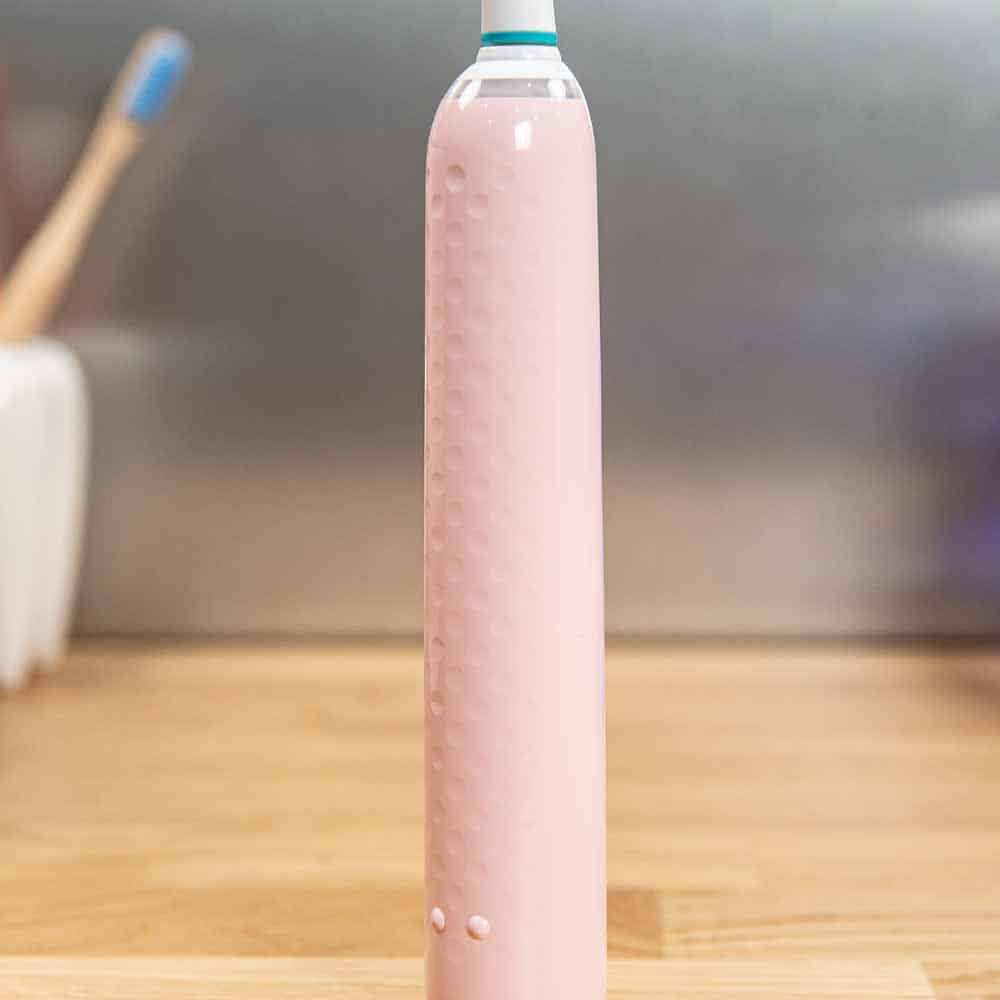
The iO3 is available in 3 colour options, black, blue and pink. The Pro 3 is available in 4. Your choices are white, black, pink and blue.
When the iO Series was first introduced in 2020, Oral-B introduced too a new brush head attachment system. This is exclusive to the iO Series.
Like the Pro 3, iO heads push on and pull off the handle, but the attachment design and look are different. Therefore both brushes use different brush heads.
The Pro 3 uses the cheaper and well known small round brush heads that Oral-B have been using the last couple of decades.
iO heads are still small and round, but they are fractionally larger than the heads for the Pro 3. If you have a cramped mouth, I’d suggest you would benefit from the heads the Pro 3 uses more than those on the iO.
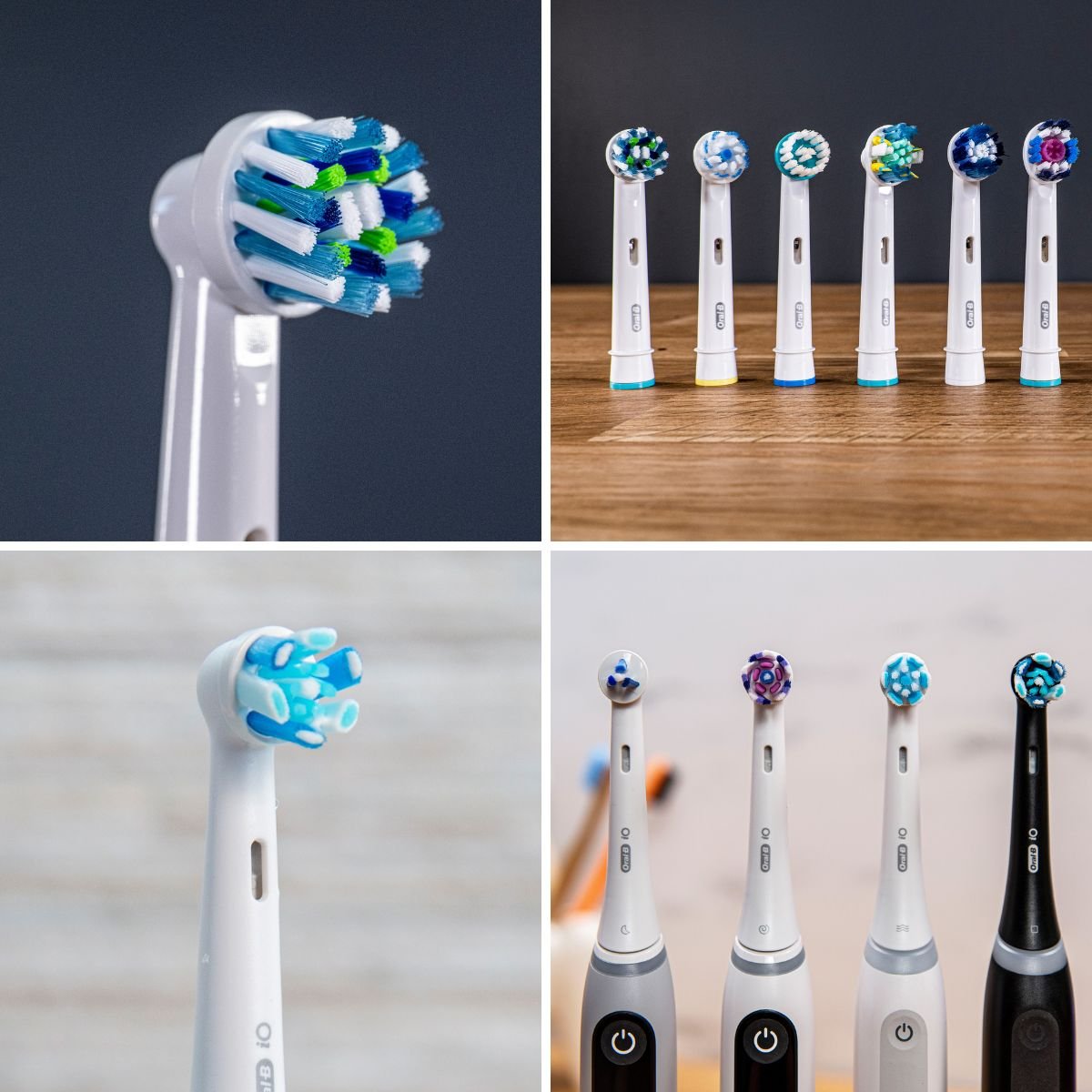
There aren’t quite as many brush head styles to choose from with the iO. I’d say this is a good thing as no one brush head delivers significantly different cleaning results.
The Ultimate Clean head supplied with the iO3 is the new equivalent to the CrossAction head, most commonly offered with the Pro 3.
A piece of tech the iO3 has that the Pro 3 does not, is a brush head replacement reminder system. When I’ve been using the brush for around 3 months, an LED within the mode button is lit yellow. This is my warning it is time to change the brush head, if I haven’t already.
It’s not a perfect system as it doesn’t track if I were to change the head sooner or use different heads on different days with different modes. But it is a useful tool to remind me that it might be time to switch out the brush head. Although I tend to have a rough idea of when I switched, I can forget, so the nudge is useful.
I only need to press and hold the button for a few seconds to reset the reminder.
If you know you are bad at replacing the bristles every 3 months, you might benefit from this. Then again I find a reminder in my phone works just as well.
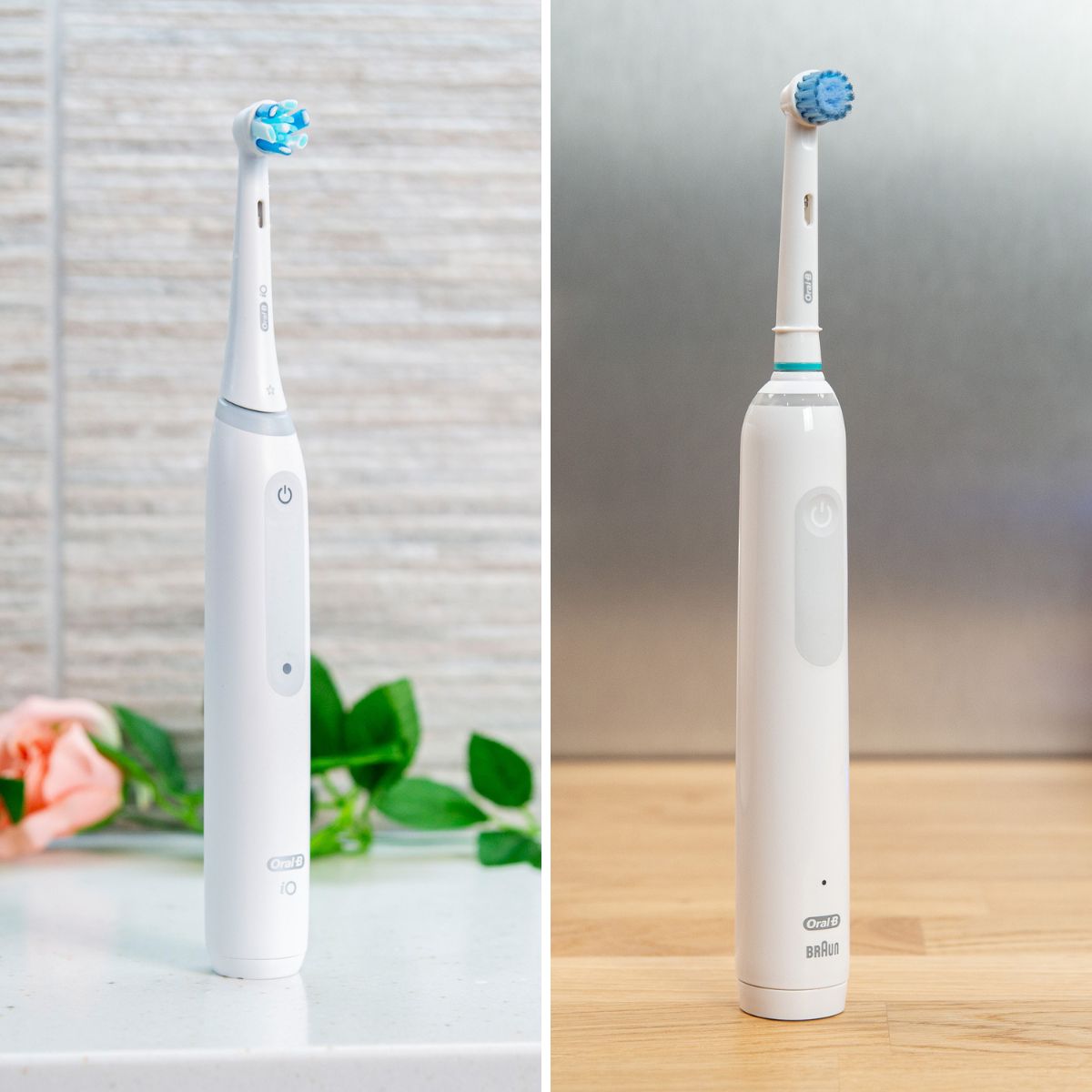
A positive knock-on effect of the iO’s new motor, more on that in the section below, is the noise the brush produces. The iO3 has a maximum decibel output of 64, whereas the Pro 3 registered at up to 73 decibels in my testing. The iO3 sounds less mechanical in use and is subsequently the more pleasant one to listen to.
Both models alert me when I brush my teeth with too much force, but the iO3’s pressure sensor is smarter.
Unlike the Pro 3 3000, it will alert me too if I apply insufficient as well as the correct brushing force, by changing the colour of the light ring around the top of the handle.
The red light emitted from the light ring at the top of the brush handle does a fairly good job of alerting me on both brushes. But I do gain an extra little peace of mind so see the green light as I brush with the iO3.
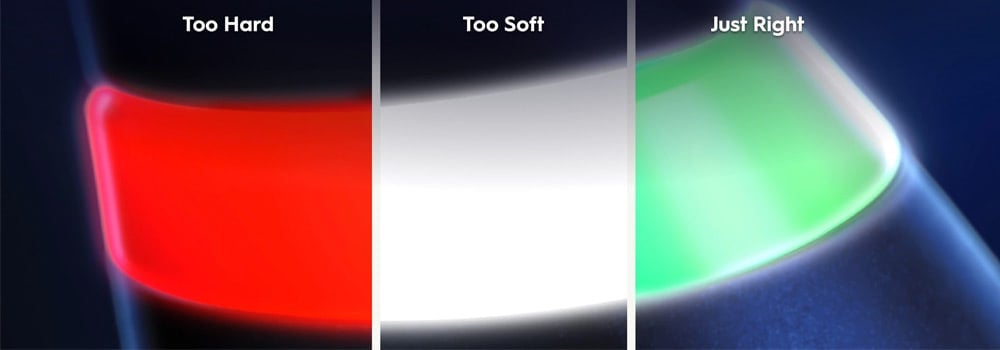
A small difference I want to mention too is the battery.
Both use rechargeable Lithium-Ion cells, claimed to offer around 14 days of use. Yet in my testing, the Pro 3 lasted slightly longer at around 20, as opposed to the 17 of the iO3. It’s not a big difference, but if I were to go on holiday, those extra couple of days could make all the difference. I wouldn’t necessarily be worried about taking the charger with me.
It is also worth noting that both the iO3 and Pro 3 have variants where a travel case is included. More often than not these don’t cost any more and work out the better buy. The variant with the travel case in the Pro 3 range is the Pro 3 3500. The iO3 with travel case version doesn’t have a different model number. The case is often just pictured or advertised with the brush.
Does one clean better than the other?
I’ve used both extensively and I can’t say one cleans the teeth any better than the other.
The cleaning results are comparable all things considered. I certainly don’t think my dentist would be able to tell the difference.
The motors used in each brush are different. But, they essentially do the same thing. Both offer oscillations and rotations of the brush head. Where the Pro 3 has a third dimension to the cleaning action known as pulsations, this is referred to as micro vibrations on the iO3.
The iO3 has a magnetically driven motor which is quieter and does give a more gentle and slightly less aggressive feeling when the bristles pass over my teeth and gums.
Although the difference is noticeable if using each brush side by side, I don’t think the softer sensation is a reason alone to pick the iO3.
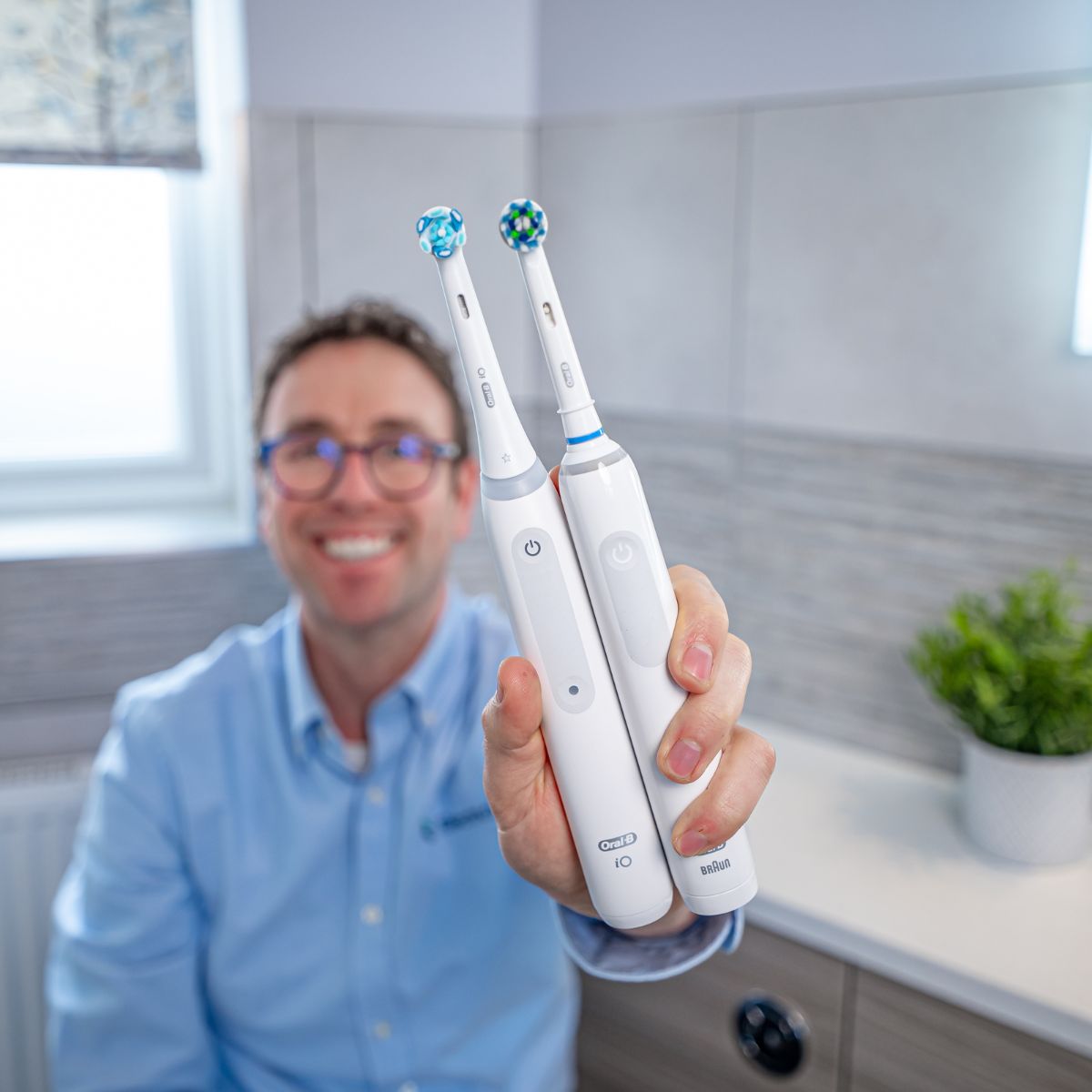
Is one better priced than the other?
The Pro 3 is significantly cheaper than the iO3.
Although the iO3 is the most affordable model in the iO range at the time of writing, it still commands a significant premium over the Pro 3.
The design, pressure sensor and quieter motor are worth something, but I can’t easily justify the current price premium as being worthwhile.
The Pro 3 has a retail price of £90 compared to the £160 of the iO3.
Actual selling prices tend to be around 50% less at £78 for the iO3 and £45 for the Pro 3.
However, a replacement brush head costs around £3 on average for the Pro 3 compared to the £8 per head for the iO3. That’s two and a half times the price, for something that does an almost identical job.
Over 3 years of ownership, the iO3 costs about £90 more to own.
£90 isn’t life changing amounts of money, but I know I can put it to good use. And if I were to use either brush for 5+ years, then that price gap only increases.
Conclusion
If price wasn’t an issue, I have to be honest and say I prefer everything about the iO3.
But, one has to question, even if I can afford it, whether it is worth spending the premium to gain features and a user experience that in reality has limited benefit to me.
I can’t justify it at this stage. If brush head prices were to drop a bit, then it might be a different story.
The Pro 3 has all the features I recommend an electric toothbrush have. I can’t fault it. It delivers great cleaning results and superb value for money. It is the better buy.


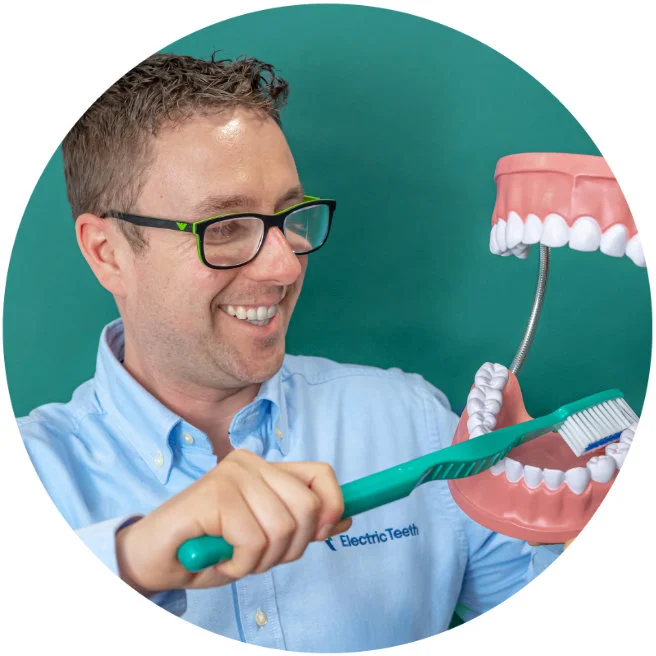

Excellent Review, thank you 👏